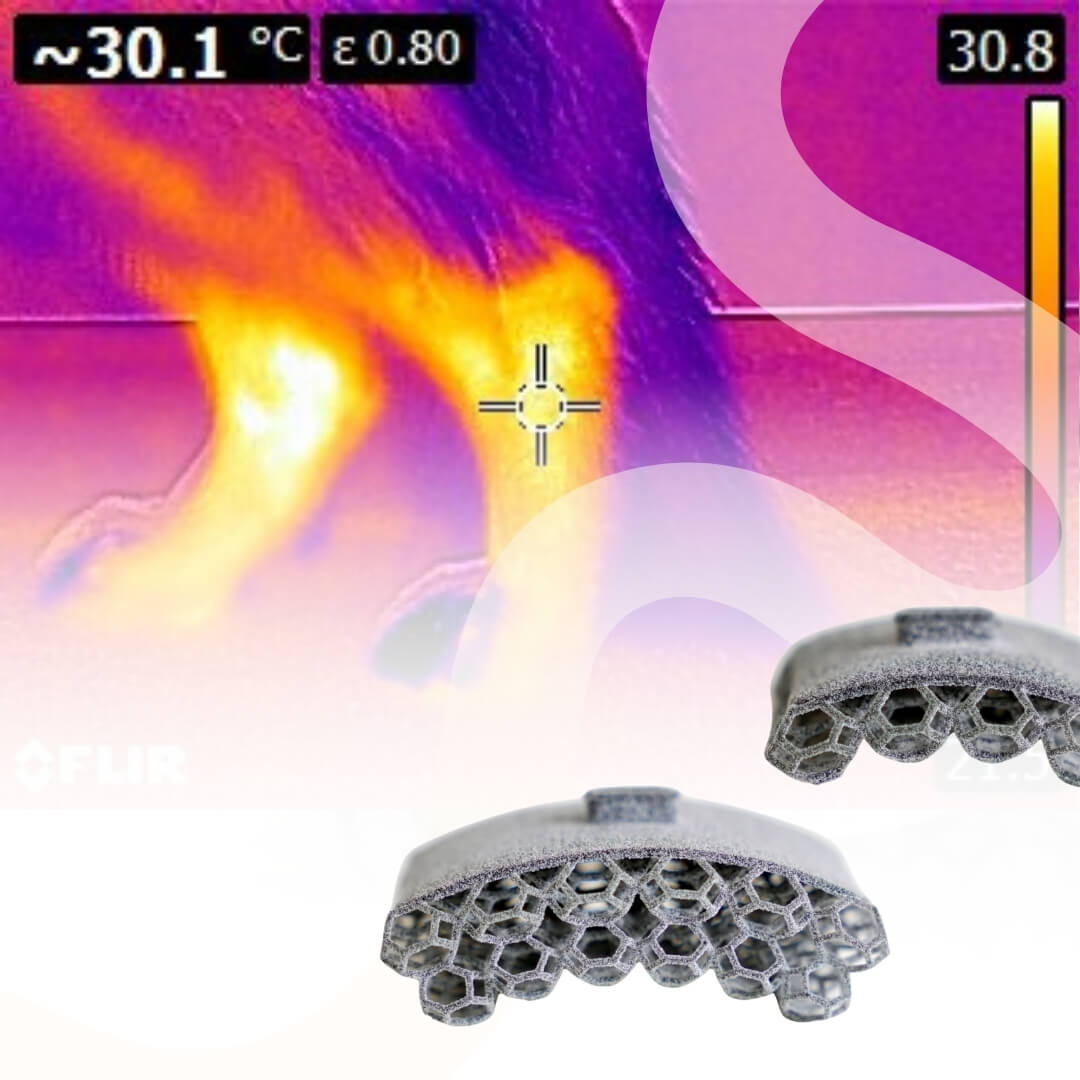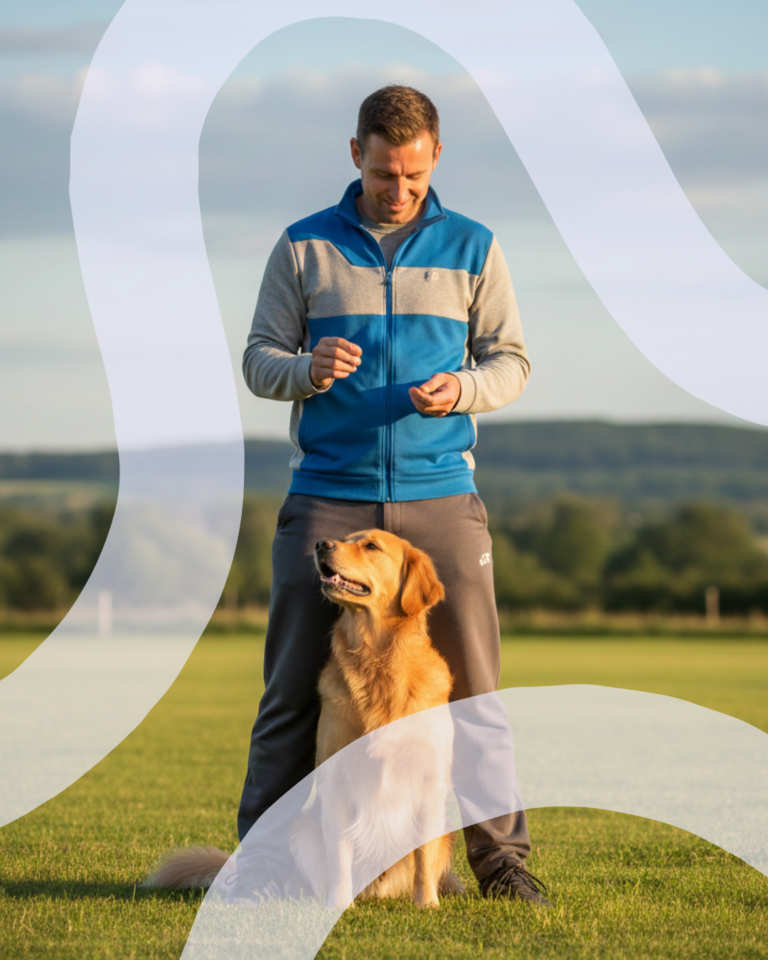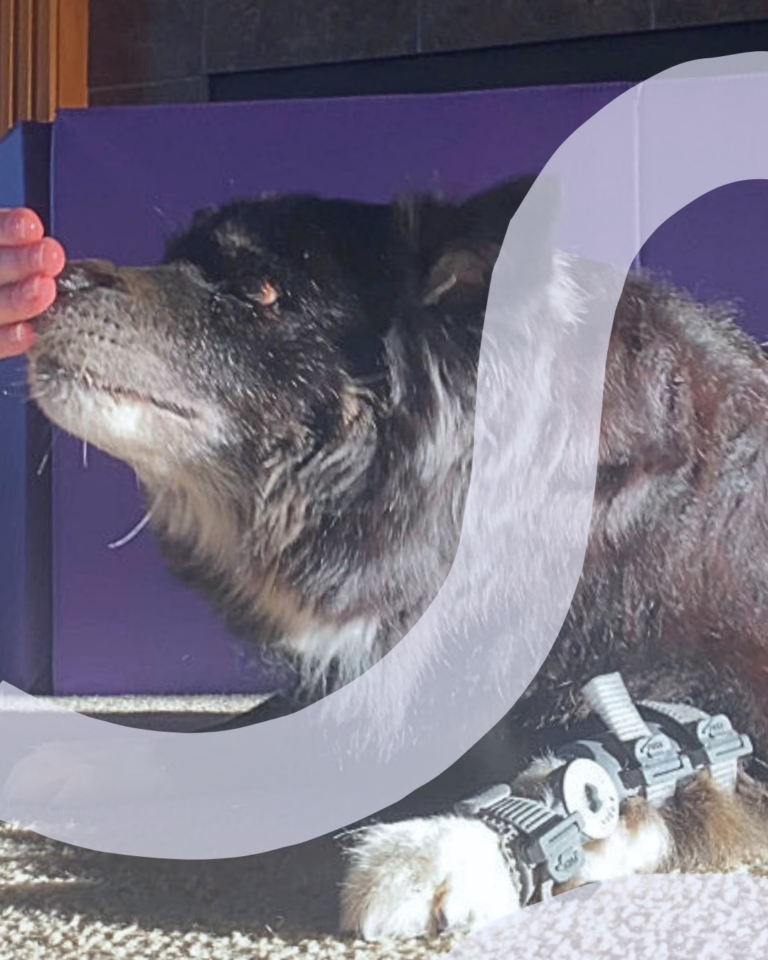As a caring pet parent, you want the best for your furry friend, especially regarding their comfort and health. If your dog or cat is currently using an orthotic device or has been recommended one by your vet, you might be concerned about its comfort and effectiveness.
Have you ever considered if there’s a better way to enhance your pet’s experience with their orthotic? For years, traditional foam padding has been the standard solution, but now there’s an exciting new option: 3D-printed lattice structures.
This innovative approach can significantly enhance your pet’s skin temperature management and overall comfort. How? In this blog, we’ll explore the key features and benefits of 3D-printed lattice structures, and discuss how they can revolutionize skin temperature regulation and, ultimately, improve the well-being of your beloved pet.
The Problem with Traditional Foam Padding
While foam padding has been widely used, it has several limitations:
- Skin Irritation
- Friction and Inconsistent Pressure
- Humidity and Dirt
Prolonged contact with conventional materials like foam can lead to skin irritation, primarily due to friction, humidity, and dirt. Traditional ethylene-vinyl acetate (EVA) foam padding often falls short in addressing these issues effectively, resulting in inconsistent pressure distribution and discomfort for pets. Foam can create pressure points that may cause skin irritation or injuries, and its tendency to trap moisture and dirt can exacerbate skin problems.
So, what if there was a better way to keep your pet’s skin cool and comfortable? The answer lies in 3D printing technology, which is revolutionizing how WIMBA addresses these challenges.
Why 3D-Printed Lattice Structures?
What are lattice structures? They are intricate, open designs structures created through 3D printing. They’re not just about looking cool—they’re functional, too. So, how do lattice structures work in pet orthotics, and what are their main benefits?
- Customizable Fit
- Lightweight and Breathable
- Ease of Cleaning
- Better Temperature Regulation
3D printing allows for orthotic products that are tailored to your pet’s unique limb shape. Unlike foam, lattice structures can be precisely adjusted to fit your pet’s limb, ensuring a more comfortable and effective fit.
New materials like Thermoplastic Polyurethane (TPU) used in lattice structures are both lightweight and breathable. This enhances comfort by providing better pressure distribution and reducing the risk of skin irritation.
Lattice structures inserts are easier to clean and maintain compared to traditional foams. Their open design helps prevent the buildup of bacteria and contaminants, promoting better hygiene.
What’s more, the open design of lattice structures improves heat management. This leads to better temperature regulation, helping to keep your pet cool and comfortable while wearing the orthotic.
What Did the Research Show?
To compare the performance of these new lattice structures against traditional foam, we conducted a series of tests with a 10-year-old German Shepherd. Our goal was to assess how effectively each material managed skin temperature and moisture.
In the research, we compared two types of padding:
- TPU Lattice Structures: These structures are made from thermoplastic polyurethane, known for its flexibility and strength. The lattice design’s porosity allows for better heat dissipation and cooling.
- Ethylene-vinyl acetate (EVA) Foam: EVA foam is widely used for its cushioning properties. It is a versatile foam material with a closed-cell structure, often referred to as foam rubber.
For the purpose of the conducted research, the dog was fitted with WIMBA tarsal orthotics.
Skin Temperature Testing
- Control Test (No Padding): Average temperature over the joint: 28.0°C; under the joint: 29.9°C.
- TPU Lattice Structure: Average temperature over the joint: 27.3°C; under the joint: 30.5°C.
- EVA Foam Padding: Average temperature over the joint: 31.6°C; under the joint: 32.5°C.
Results:
- TPU Lattice Structures: The average temperature readings were lower both above and below the joint compared to the foam padding. This indicates that TPU lattice structures are more effective in keeping the skin cooler.
- EVA Foam Padding: The temperature readings were higher, suggesting less effective temperature regulation. This can lead to discomfort and potential skin issues.
Moisture Management
We also assessed how well TPU lattice structures and EVA foam materials managed moisture. Moisture control is crucial because excess moisture can lead to skin irritation and infections.
Results:
- TPU Lattice Structures: Showed a significant reduction in moisture over time, thanks to their breathable design. The lattice structure allows for quicker evaporation and less moisture accumulation.
- EVA Foam Padding: Retained more moisture, which can be problematic as it creates a damp environment that may lead to skin infections.
Measurements taken at intervals revealed that TPU lattice structures are more effective at managing moisture compared to traditional foam:
- 0 min: Both TPU and EVA foam showed 80% moisture.
- 30 min: TPU decreased to 60%, while EVA foam remained at 70%.
- 60 min: TPU further decreased to 40%, while EVA foam was at 60%.
Why Does It Matters for Your Pet?
Choosing or switching to orthotics with 3D-printed lattice structures can offer numerous benefits for your pet:
- Enhanced Comfort and Well-being
- Better Temperature Regulation
- Improved Hygiene
TPU lattice structures help keep your pet’s skin cooler and drier, leading to greater comfort during wear. This is particularly beneficial for pets with chronic conditions or those who need to wear orthotic devices for extended periods.
Lattice structures are easier to clean and less likely to harbor bacteria compared to traditional foam. The open design simplifies hygiene maintenance and reduces the risk of infections by minimizing the buildup of contaminants.
By enhancing temperature regulation and moisture management, 3D-printed lattice structures contribute significantly to your pet’s overall well-being. They provide a more comfortable, hygienic, and customized solution compared to traditional foam padding.
Conclusion: A Step Forward in Pet Care
3D-printed lattice structures represent a significant advancement in pet orthotics. By improving temperature regulation, comfort, and hygiene, they offer a notable upgrade over traditional foam padding. If you’re considering new orthotic solutions for your pet, the future looks bright with these cutting-edge technologies. WIMBA orthotics devices is here to support you with custom-made, 3D-printed, and ultra-light orthotics tailored specifically for your furry friend.
Stay tuned for more insights into the materials and technologies that make WIMBA orthotics a superior choice for pet recovery.
Do you want to learn more?
Download our research and discover how 3D printing and TPU lattice structures in orthotic devices are revolutionizing pet care with improved comfort, reduced skin irritation, and enhanced temperature management.
References
- Lee, H., & Choi, S. (2024). Protocols and their effects for medical device-related pressure injury prevention among critically ill patients: a systematic review. BMC nursing, 23(1), 403. https://doi.org/10.1186/s12912-024-02080-y
- Chien, W. C., & Tsai, T. F. (2024). Pressure and Skin: A Review of Disease Entities Driven or Influenced by Mechanical Pressure. American Journal of Clinical Dermatology, 25(2), 261-280. https://doi.org/10.1007/s40257-023-00833-0
- de la Rosa, S., Mayuet, P. F., Méndez Salgueiro, J. R., & Rodríguez-Parada, L. (2021). Design of customized TPU lattice structures for additive manufacturing: influence on the functional properties in elastic products. Polymers, 13(24), 4341. https://doi.org/10.3390/polym13244341
- Khorasani, M., MacDonald, E., Downing, D., Ghasemi, A., Leary, M., Dash, J., … & Bateman, S. (2024). Multi Jet Fusion (MJF) of polymeric components: A review of process, properties and opportunities. Additive Manufacturing, 104331. https://doi.org/10.1016/j.addma.2024.104331
- Beloshenko, V., Beygelzimer, Y., Chishko, V., Savchenko, B., Sova, N., Verbylo, D., … & Vozniak, I. (2021). Mechanical properties of flexible tpu-based 3d printed lattice structures: Role of lattice cut direction and architecture. Polymers, 13(17), 2986. https://doi.org/10.3390/polym13172986
- Ji, X., Deng, L., Zhang, J. et al. Energy Absorption Characteristics of 3D Lattice Structure Filled with Periodic Inner Core Based on 3D Printing. J. of Materi Eng and Perform 31, 6784–6794 (2022). https://doi.org/10.1007/s11665-022-06692-w
- Chen, H., Sun, D., Gao, L., Liu, X., & Zhang, M. (2023). Mechanical Behavior of Closed-Cell Ethylene-Vinyl Acetate Foam under Compression. Polymers, 16(1), 34. https://doi.org/10.3390/polym16010034
- Gong, W., Ma, Y. L., Fu, H., Ban, D. M., He, L., & Gang Yin, X. (2018). Study on thermal insulation performance of EVA foaming materials. Ferroelectrics, 527(1), 16-24. https://doi.org/10.1080/00150193.2018.1450044
- Tang, Y., & Zhao, Y. F. (2014, November). Design method for lattice-skin structure fabricated by additive manufacturing. In ASME International Mechanical Engineering Congress and Exposition (Vol. 46445, p. V02BT02A030). American Society of Mechanical Engineers. https://doi.org/10.1115/IMECE2014-38645
- Sajjad, U., Rehman, T. U., Ali, M., Park, C. W., & Yan, W. M. (2022). Manufacturing and potential applications of lattice structures in thermal systems: A comprehensive review of recent advances. International Journal of Heat and Mass Transfer, 198, 123352. https://doi.org/10.1016/j.ijheatmasstransfer.2022.123352






